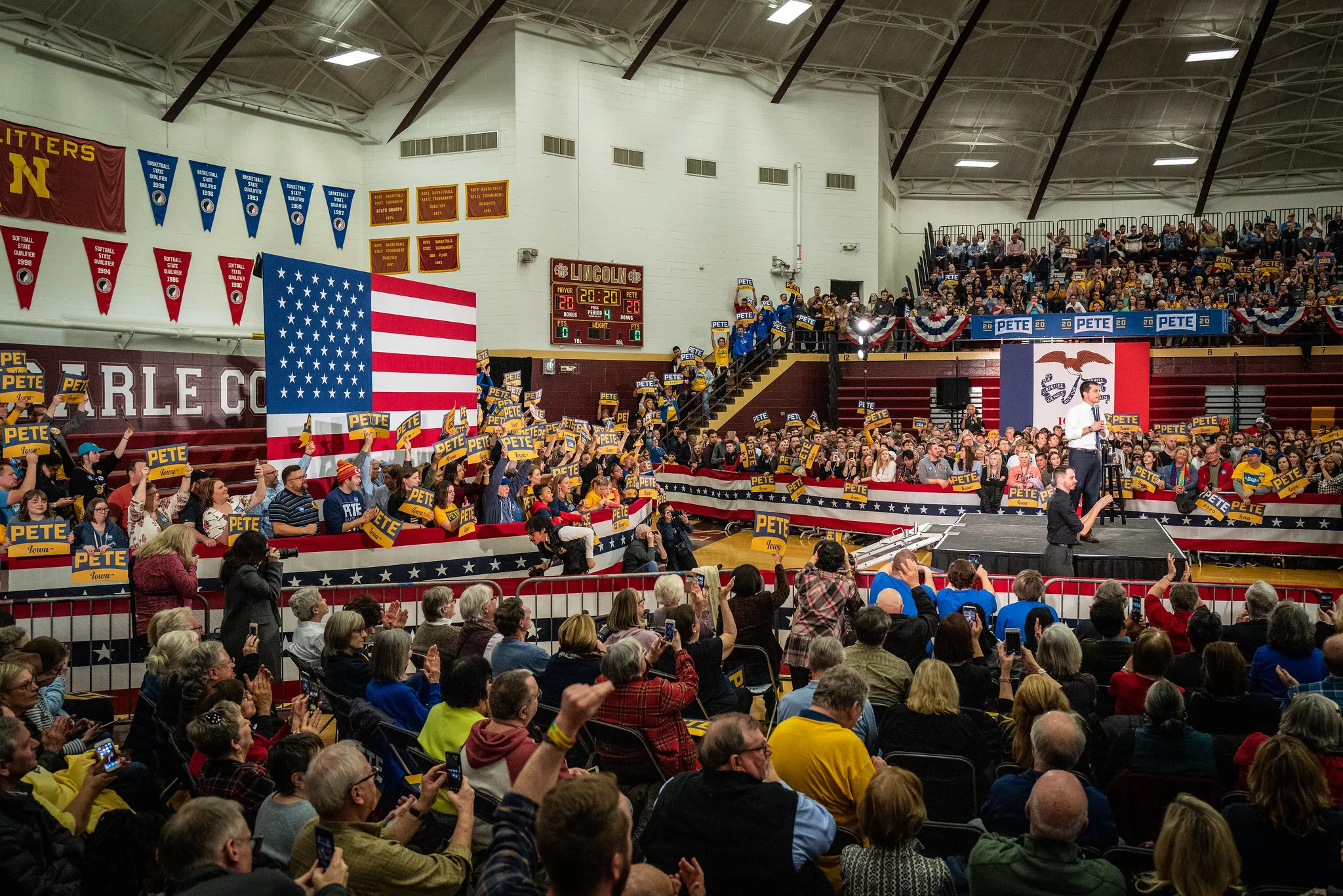Explainer: Presidential Primaries in the United States

Disclaimer: Opinions expressed in this commentary are those of the authors and do not necessarily represent the institutional position of International IDEA, its Board of Advisers or its Council of Member States.
For all that people found themselves puzzled (or amused) by recondite rituals during the coronation of King Charles III, the process of choosing a President of the United States may actually be more difficult to understand. In this blog post, I will explain why the attention of so much of the world’s media was on the school gymnasiums and church halls of the sparsely populated US state of Iowa on 15 January 2024, and the tiny village of Dixville Notch, New Hampshire (population six) a week later. A key point that runs through this explainer is that each state (and territory and the District of Columbia) is different. These state-level decisions define the nature of the selection process, who can participate, and when the vote takes place.
Fundamentally, votes in state-level nominating processes are used to allocate party delegates to candidates. Somewhat like the indirect method of electing the President via the Electoral College, the party nominees for President are not directly elected, but rather elected by these delegates at the party’s national convention, usually held in late summer. As with everything else, the states and parties vary in the methods by which they allocate the delegates (e.g., proportionally, winner-take-all, etc.). The candidate with the most delegates will be formally nominated at the convention.
In 2024, an astonishing 295 days will pass between the first votes to choose the parties’ presidential candidates (the Iowa caucuses on 15 January) and the federal election on 5 November. In between, each state will organize a process through which people will participate in the selection of partisan candidates for the various offices that will be on the ballot in the federal election.
What is a primary? And how is it different from a caucus?
Both the Democratic and Republican parties choose their candidates through one of two types of electoral process: a primary or a caucus. These electoral processes take place in the 50 states, the District of Columbia, and the territories of the United States (such as Puerto Rico and Guam). The caucus system involves members of a political party (more on this below) gathering in person at the local level, exchanging views, often gathering themselves into groups supporting one candidate or another, and finally voting through secret ballots. Caucuses are organized by the political parties themselves. In contrast, a primary is essentially an intra-party election at the state level. As such, primary elections are usually (but not always) organized by the state government rather than the political party.
There is a complex relationship between the national parties, the state-level party organizations, and the state-level government officials in organizing the primaries and caucuses. This dynamic was well illustrated this year by the confusing situation that developed in Nevada. In an event that may be unique in American history, Nevada held both a primary and a caucus, with different candidates from the same parties participating in the two processes. The state government organized a primary (in which Donald Trump did not participate) while the Republican party organized a caucus (in which Nikki Haley did not participate). The Republican party recognizes only the outcome of the caucus, and did not allow candidates who stood in the primary to be candidates in the caucus.
Who can participate?
A key point here is that membership in a political party in the United States can be a fairly loose association. In many states, when citizens register to vote they register as members of one of the parties. The states vary in the way this affects the presidential candidate selection process. For example, Florida has a ‘closed primary’ in which citizens can only vote in the primary election for the party for which they have declared their affiliation when they registered to vote. It is not possible to change one’s party affiliation in the month before an election (including a primary election). By contrast, in Iowa’s caucuses citizens are limited to participating in the caucus of the party with which they registered, but it is possible to change one’s partisan affiliation on the day of the caucus. At the opposite end of the spectrum from Florida (and there are many shades between) is Texas, which holds ‘open primary’ elections in which voters have to choose which party primary to vote in, but party registration does not limit their choice (e.g., registered Democrats can vote in the Republican primary).
Who is running for the major party nominations?
Even though very few of the delegates have been selected in the primaries and caucuses thus far, most of the early candidates had dropped out (or ‘suspended their campaign’) by the beginning of February. Nevertheless, it can be useful to understand how many candidates launched a formal campaign. On the Republican side, 13 candidates launched a national campaign for the nomination. It is rare for a first-term president to face a viable challenge for the party nomination, but two other candidates launched campaigns for the Democratic nomination. Beyond the candidates competing for the nominations of the two major parties, there have been at least three independent or third-party candidates: Robert F. Kennedy Jr., Cornel West, and Jill Stein. The table below lists the major party candidates who launched a national campaign. There are a great many more candidates who have (and will) appear on the ballot in some states. Relatedly, a candidate’s decision to suspend their campaign does not always remove their name from the primary ballots.
|
Republican Party |
Democratic Party |
|
Donald Trump |
Joe Biden |
|
Nikki Haley |
Dean Phillips |
|
Ron DeSantis* |
Marianne Williamson* |
|
Asa Hutchinson* |
|
|
Vivek Ramaswamy* |
|
|
Chris Christie* |
|
|
Doug Burgum* |
|
|
Tim Scott* |
|
|
Mike Pence* |
|
|
Larry Elder* |
|
|
Perry Johnson* |
|
|
Will Hurd* |
|
|
Francis Suarez* |
|
* suspended campaign
What should we expect as 2024 unfolds?
While there has been a sense of inevitability about a re-match between President Joe Biden and former president Donald Trump in the general election, the nomination process on the Republican side began very early and continues to be somewhat uncertain. The first debate between candidates for the Republican nomination was held in August 2023 – eleven months before the party convention in July 2024. From the very beginning of the Republican nomination process Donald Trump appeared to be the most likely nominee. However, litigation in state and federal courts will have a bearing on his ability to stand for election even if he is the Republican nominee. Within months, the Supreme Court will rule on whether or not Donald Trump is barred from holding federal office due to his encouragement or participation in what may have amounted to an insurrection on 6 January 2021, and can therefore be excluded from the ballot by state-level elections officials. The timing of this ruling will have immense implications, with the stakes increasing as each successive state holds its primary or caucus. March is a big month in the nominating process, including 16 states voting 5 March, often called ‘Super Tuesday.’




